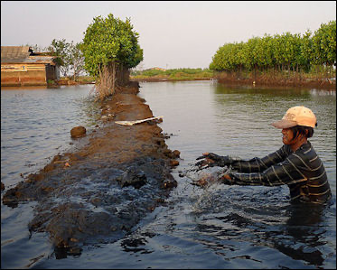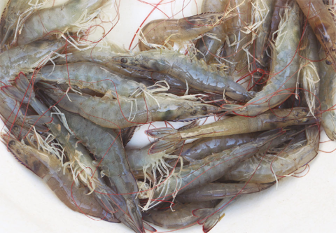As an archipelago country, Indonesia has great potential in the fisheries industry, especially because it has a fairly broad sea area of 7.9 million km2 and a long coastline of 80,791 km2, with extensive aquaculture and fishponds spread in some parts of the country. With such a coastline size (the second-longest after Canada), Indonesia has a great opportunity to become the largest cultivated shrimp producer in the world with the largest potential for ponds and cultivated shrimp production (3 million hectares) and the largest in the world.

Shrimp is Indonesia’s main fishery export commodity, and it is well suited to cultivated production. In 2013, The Global Aquaculture Alliance, a certification NGO, projected an average annual growth rate of 10.7% in Indonesia’s shrimp cultivation from 2012 to 2015. The Indonesian government has issued even more optimistic targets. The country reportedly has 1.2 million hectares of potential areas for shrimp breeding, giving it the potential to become the world’s largest shrimp exporter. As with other seafood goods, the shrimp industry harbors the potential for productivity gains through the employment of modern know-how and technology.
However, until 2018, Indonesian cultivated shrimp production was only 907,998 tonnes (KKP version) or 450,000 tonnes (SCI and GPMT versions). China with 14,500 coastlines and Vietnam with 3,444 km of coastline produces around 2 million tons and 775,000 tons, respectively.
The technical capability of the Indonesian nation regarding shrimp cultivation is one of the best in the world and it is proven that Indonesia is one of the top five world shrimp producers. In the last three decades, demand and prices for shrimp both in global (export) and domestic markets have been relatively stable and are expected to continue to increase in the future. Most of the national shrimp production comes from cultivation activities, with an average production increase of 13.75% / year.
Since the 1990s, commodities and processed shrimp products, especially from aquaculture, have been the largest contributor (35% = USD 1.7 billion) to the total value of Indonesian fisheries exports (USD 4.94 billion). Shrimp farming is highly profitable, with a net profit of around IDR 20 million - IDR 45 million (average IDR 22 million) / ha/month, and this can be a solution to alleviate poverty.
The crustacean aquaculture and capture business activities can create very wide multiplier effects. Also, it turns out that demand and the domestic and export market for these crustacean products continue to increase. In terms of cultivated shrimp production capacity in Indonesia, the sky is the limit. A further suggestion from various aquaculture experts is for Indonesia to cooperate synergistically from upstream to downstream in shrimp cultivation. As well as holding a feed entrepreneur, farmers, and processors to be able to produce shrimp vaname which became a new export in the world of fisheries. Indonesia also benefited freely from the epidemic EMS (early mortality syndrome), which threatens shrimp producers of ASEAN countries. This means that when the plague attacks other countries, Indonesia can steadily increase its production to increase exports.

To improve the quantity and quality of its exports and to remain competitive in regional trade, Indonesia’s shrimp farming sector is under high pressure to modernize equipment and adapt production techniques. This includes the rearing and harvesting of shrimps as well as various forms of processing, and it makes the sale of equipment one of the most obvious business opportunities for foreign companies. Undoubtedly aware of the need for modernization in the industry, the government should prove generous in applying legal facilities to reduce or waive duties and/or taxes on imported capital goods.
Fast distribution is crucial concerning fresh seafood, which is in particularly high demand in urban centers, where most of Indonesia’s prosperous middle-class consumers live. Getting it there on time is a logistical challenge in a country that remains behind the curve in infrastructure development. This is a business opportunity for firms providing live shipment or temperature-controlled transportation of fresh and frozen goods. Given that seafood export volumes from Indonesia have significant growth potential, so does a specialized shipping service to bring Indonesian produce to overseas markets.
